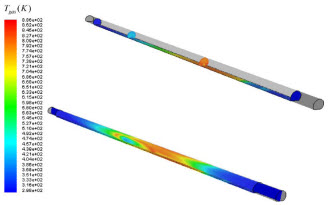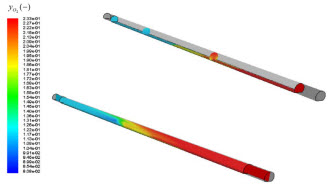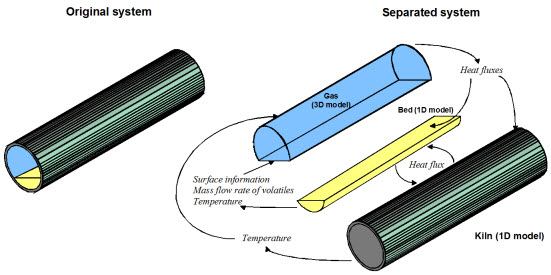Pyrolysis of Aluminium Waste
This acitvity was done in the frame of a partnership with Pechiney Research Center in Voreppe (which later became Rio Tinto Alcan) in 2004. The study dealt with the elimination of the organic coating of aluminium used for food preservation (cheese packaging, can...). The processing was consiting in a rotary kiln pyrolysis of the waste. To study the operation, Pechiney Research Center had developped a pilot plant (1 kg/h) where energy was brought to the process thanks to two electrical heaters (Shield furnace).
Sketch of the experimental device.
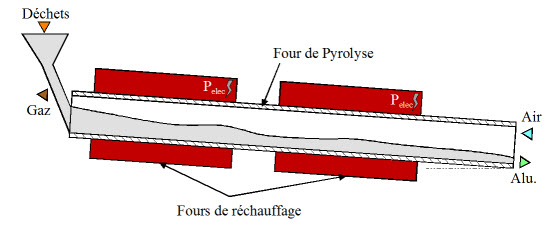
The goal of the partnership was to build a model
in order to understand the phenomena accouring within
the reactor and to allow designing a potential industrial
instllation.
The model was relying on three sub-models : 1) a model
for the moving bed of solids, 2) a model for the kiln itself
and 3) a model for the gas phase were gaseous products of
pyrolysis where oxidized and contributed to the thermal
equlibirum of the process. These three sub-models where coupled
as it is illustrated in the following figure.
The bed model was composed of an assembly of non spherical particles (plan shaped particles with a width of organic coating) in plug flow inside the rotary kiln. As they were processed, the partciles were heated up under the effect of heat transfer with the kiln and with the freeboard gas. When the temperature reached a critical value, the orgnaic coating was pyrolysed with a first order reaction with respect to the actual organic content. This pyrolysis was releasing gaseous species that were oxidized in the freeboard where oxygen was available.
Bed Model.
Sketch of the particles being processed (left),
and conversion
of the organic coating as a function of
temperature (right).

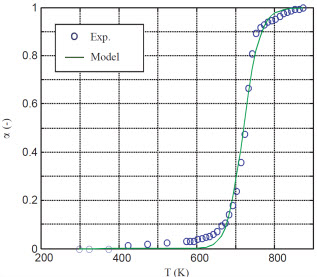
The model decriving the behavior of the kiln was based on 1D
desciption of the evolution of the temperature along its axis.
The temperature profile (averaged over the circumference of
the kiln) was computed tahnks to an energy balance accounting for
axial conduction, heat transfer with the bed, heat transfer with
the gas (convective and radiative) and energy yield by the electrical
heaters.
The model describing the phenomena occuring in the freeboard gas
that was submited to homogeneous oxidation and to radiative heat
transfer was relying on the use of CFD and more precisely on the
use of Fluent.
One of the spcificity of the model was associted to its solving.
Because of the coupling that was occuring with the three sub-models,
an interative algorithm had been implemented and a specific software
developped.
Algorithm for solving of the coupled model.
Algorithm (left), Software (right)
and iterative evolution of the results (bottom).
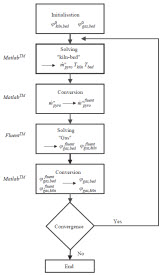
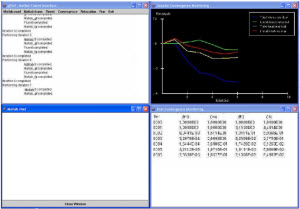
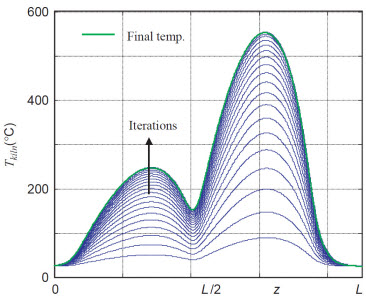
After validation of the model in a configuration where no thermal degradation was occuring (bed of inert material), the model allowed for a better quantification of the phenomena involved in the process.
Comparison (experimental/numerical) of the axial
profil of temperature.
Configuration with and without reaction.
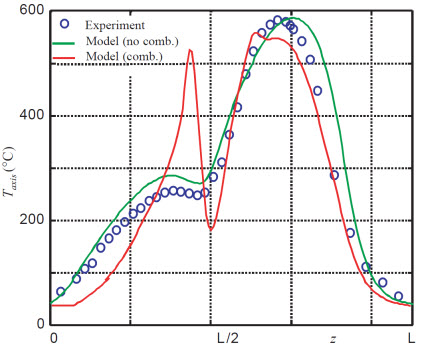
Résults of the model
Axial profile of temperature (left) and
specific heat fluxes.
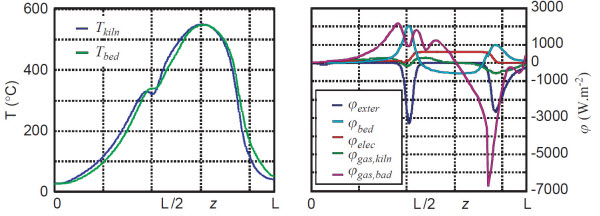
Results of the model (continued.)
Profils of temperature (left) and
of oxygen mass fraction (right) in the
gas phase.
